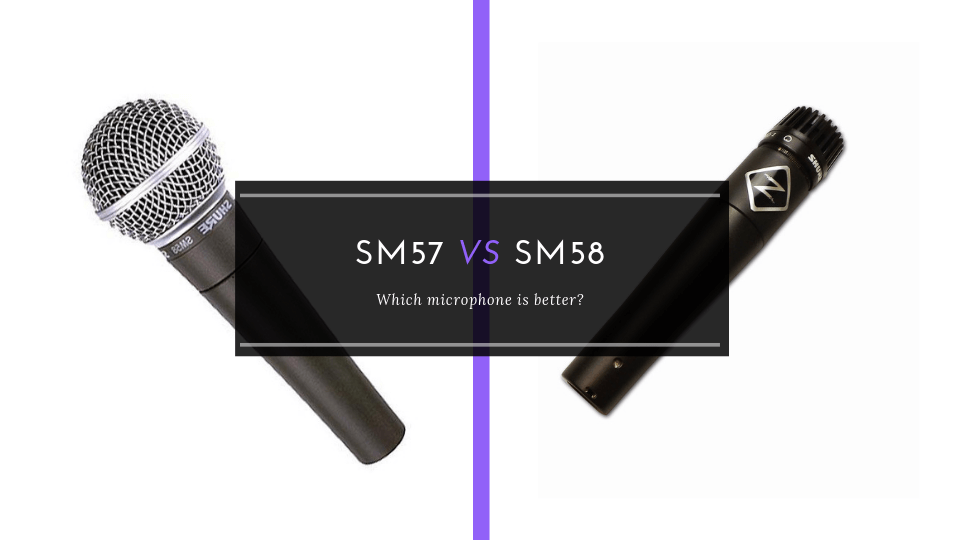
For those in the market for a new mic, it’s worth comparing two of Shure’s most successful microphones, the SM57 and the SM58. Aside from being a digit apart in name, how do these two compare?
Looking for a new microphone? Start by looking at the models of some of the more popular brands, like Shure Microphones or check out some iPhone microphones.
SM57 vs SM58: Introducing the Options
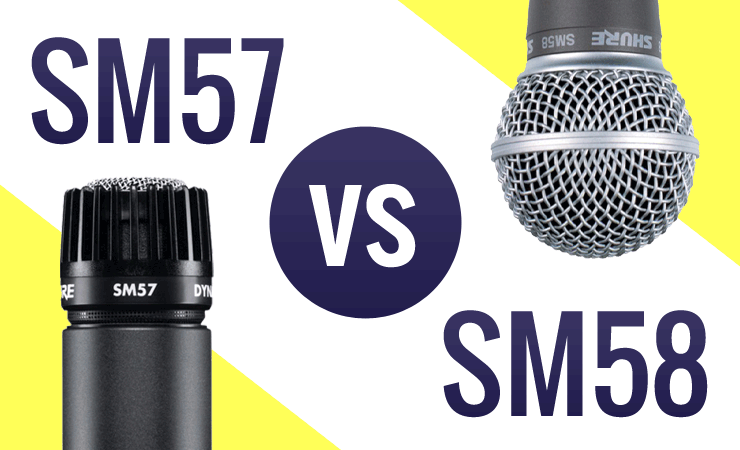
We’ll get into a more high-level comparison in a moment, but first, let’s take a closer look at the SM57 and SM58 so that we know exactly what we’re dealing with here.
A cardioid dynamic microphone, the SM57 is designed primarily for picking up instruments, whether amplified or acoustic. Still, Shure made, well, sure that it offers just as rich of a recording when it comes to vocals. Outfitted with a contoured frequency response, the SM57 also naturally reduces background noises and features a pneumatic shock mount system to minimize those worrisome vibrations.
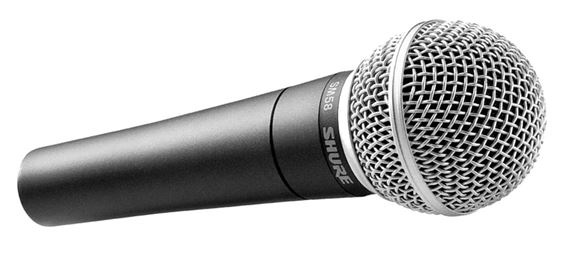
While the SM57 is tailored to musicians, the SM58 is intended mainly for recording vocals. It too has a uniform cardioid polar pattern, allowing for every nuance of your voice to be captured clearly and evenly. No matter what kind of performance it is recording — from podcasters and singers to speech-makers and business leaders — the SM58 carries your message out to the audience with that crisp sound you’re looking for every single time you use it.
Both the SM57 and the SM58 have the durability and precise engineering that Shure is known for, each catering to a very distinct yet specific segment of the company’s consumer base. Of course, this baseline description of each microphone only scratches the surface on how they compare and contrast from each other.
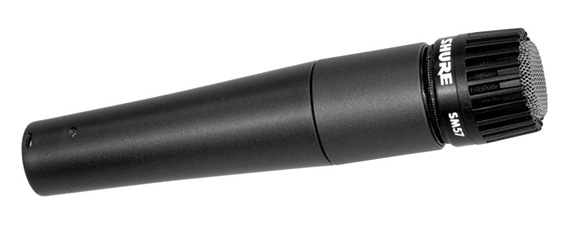
Ready to jump into greater detail on Shure’s SM57 and SM58? Then keep reading.
SM57 vs SM58: What’s the Same
If nothing else, Shure clearly knows its customer base well enough to segment its products for each application. Even so, the SM57 and SM58 do share a few things in common. Let’s review them before we tackle how they are so very different.
1. Pricing
Regardless of which microphone you end up purchasing, you’ll find that the SM57 and SM58 actually share remarkably similar price points. The basic version of both products is priced at $99, which is actually a pretty reasonable amount considering the audio quality that either microphone delivers. No matter what your project is, you’ll want to be able to capture it in the best way possible. So it should be a relief that Shure’s pricing is consistent between these two microphones, considering that they are more or less on par as far as the level of production they each yield.
2. Input
We’ll save the discussion over dynamic versus condenser microphones for another day. But if you’re wondering whether the SM57 and SM58 take advantage of different transducers, you’ll be pleased to know that — in keeping with the consistent pricing — both Shure microphones are based on the exact same cartridge design. Dynamic microphones are known for their durability, ability to absorb surrounding noise with minimal interference and their ability to function without an additional power source. In some cases, a condenser microphone may be preferred, but as far as these two go, dynamic is the name of the game.
3. Accessories
If you really want to trick out your recording setup, then you should probably head over to the Shure website to shop to your heart’s content. But if all you need is the bare minimum to get started recording, then both the SM57 and SM58 have you covered. You’ll receive a swivel stand adapter and storage bag with either microphone so that you’ll be ready to roll as soon as you open up the box. After all, there are few things worse than finally receiving your brand-new Shure microphone and not being able to use it immediately. Thanks to the forethought of the folks over at Shure, you won’t ever have to face that unpleasant scenario.
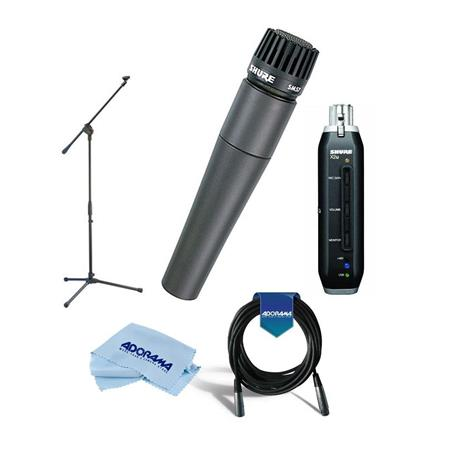
SM57 vs SM58: How They Differ
The SM57 and SM58 might sound like two variations on a very similar product, but that couldn’t be further from the way that Shure has designed them for their intended use. Here are a few key ways in which these two microphones are very different.
1. Connectivity
While the SM57 solely operates with a wired connection, the SM58 can work both with or without a cable. Of course, additional components would be required to facilitate this capability, but luckily, Shure has a number of wireless systems that complement the SM58. If you need to be free to move around during your recording (such as during a speech or other live performance), then this is the microphone you need. The SM57’s more stationary design would probably only complicate matters and disturb your thought process and, thusly, performance quality. You cannot put a price on the freedom afforded to you by a wireless experience.
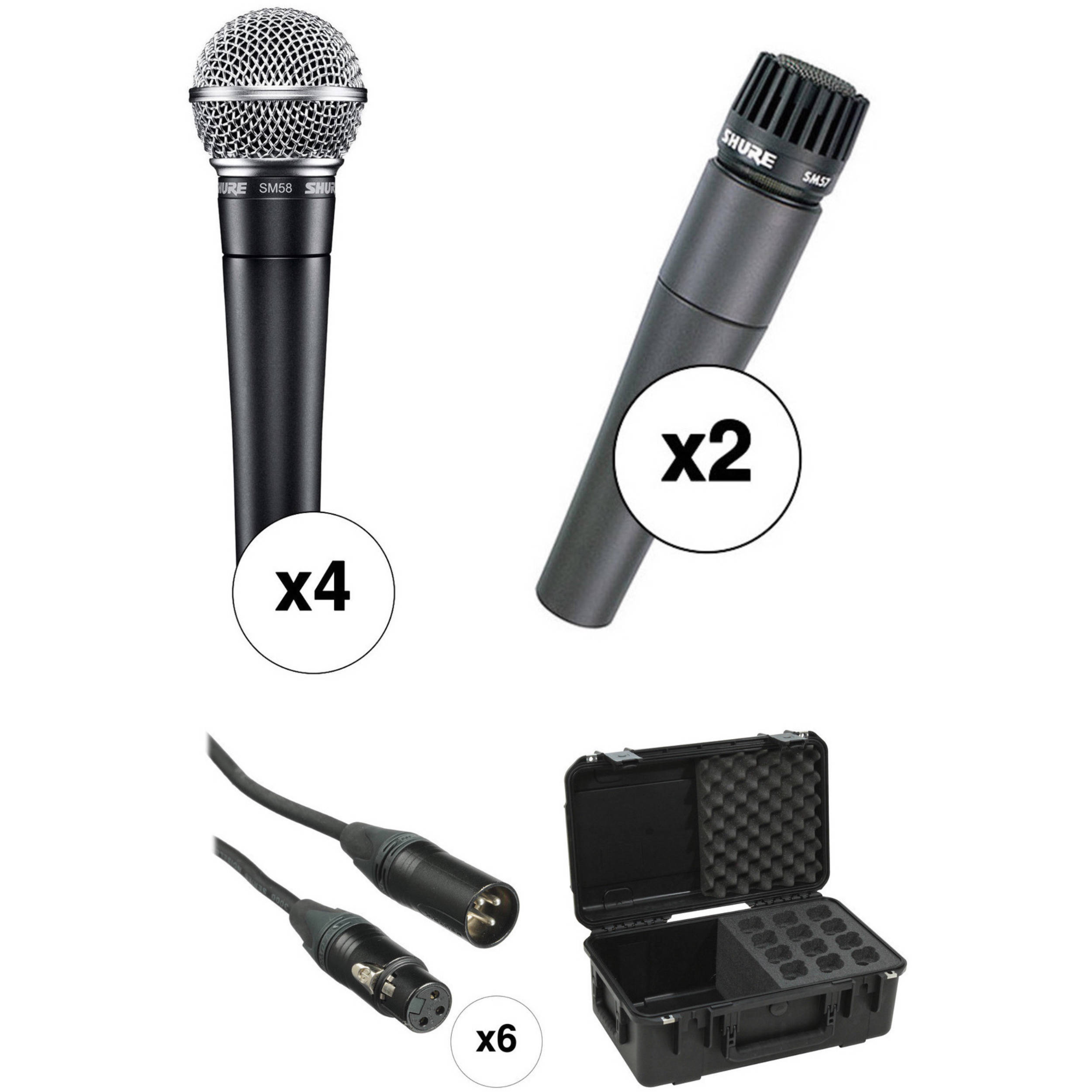
2. Use
In accordance with the connectivity we mentioned above, each of these Shure microphones was created from the ground up with a particular environment in mind. With its wired connectivity limiting movement and its focus on picking up quality instrumentation sound, the SM57 is meant to be used to capture performances in the studio. Conversely, the SM58 prioritizes a more active recording experience. It is therefore best suited for the stage. Live vocals, speeches, stand-up comedy and any other scenario in which movement is a benefit rather than a hindrance to the quality of your performance are perfect fits for the SM58. As always, your desired use dictates which microphone you should purchase yourself.
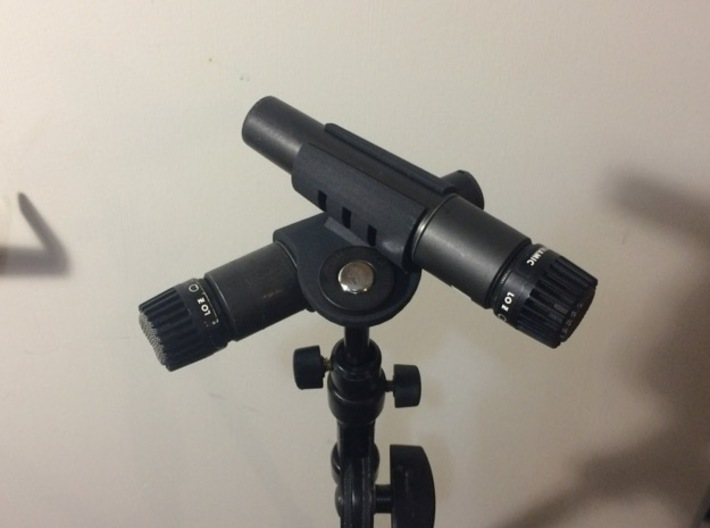
3. Design
Part of what makes the SM57 and SM58 so different when it comes to their applications is the exterior design. Both microphones bear a grille, but the SM58 has a much bigger one to better capture the roundness of a vocal performance. It even features a built-in pop filter to minimize plosives and other unwanted sounds, whereas the SM57’s smaller grille features a resonator and grille assembly that downplays any potential vocal imperfections that might sneak their way through. In fact, the grille in the SM57 is part of the cartridge itself. The distinct grille designs each place the diaphragm in a different location, optimizing the acoustic range even before one second of audio is recorded.
4. Polar pattern
A huge consideration that not everyone thinks about when it comes to microphones is the distinct polar pattern that each product carries. The SM57, for instance, has a unidirectional polar pattern, meaning it absorbs sound coming from a single direction. If you’re playing an instrument or speaking directly into the microphone for a podcast or other vocal performance, that should certainly do the trick. But some circumstances would benefit from having an additional option within reach. To that end, the SM58 offers an omnidirectional polar pattern alongside the unidirectional one. This option allows for sound to be captured from all sides, creating a more immersive experience for listeners and leaving room for more than one source to be evenly picked up.
5. Combinations
Although the SM57 only comes with one purchase option, the SM58 actually gives consumers three packages they can choose from when they complete their order. With SM58-LC, you can opt to receive the microphone without the cable, perhaps if you already have one. The SM58-CN is the package that indeed includes the cable, and the SM58S presents a variation on the standard microphone that features an on and off switch. This isn’t a huge difference for many customers, but it does provide you with the choice of saving a bit of extra money or indulging a bit on one last special feature you can use to trick out your microphone.
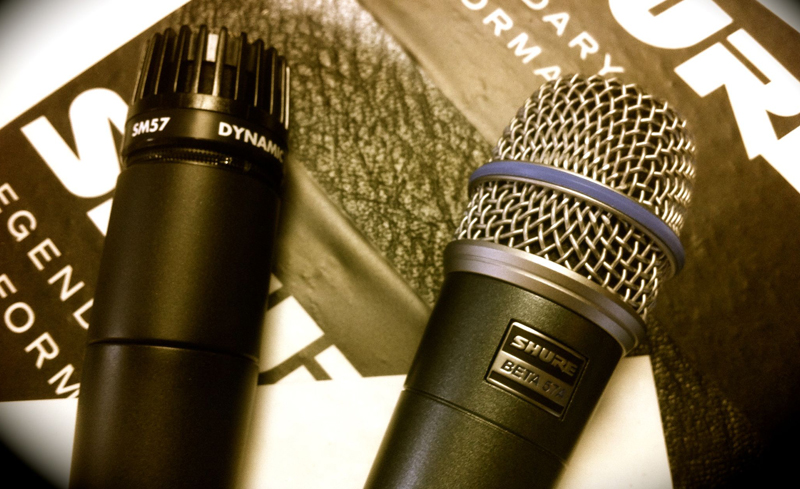
SM57 vs SM58: Which Is Better?
Okay, so we’ve introduced you to both the SM57 and the SM58 as well as outlined the similarities and differences between them. But none of that answers that all-important question: at the end of the day, which microphone is actually better?
The Case for the SM57
We’ve discussed already that the SM57 is best suited for the studio. If that is what you’re looking for, then you’re in for a tremendous recording experience with this microphone on your side. The contoured frequency response streamlines production, making it a much smoother journey to the best possible audio quality. After all, when you are in the middle of a creative endeavor, the last thing you want is to have to consider the audio quality that may result. Instead, you can trust the SM57 right from the moment you open the box.
Moreover, because the SM57 is built to last, you can cut loose during your performance without causing any harm to your recording. Even more impressively, the uniform cardioid pattern and built-in shock mount system ensure that it captures all the nuance in your voice. And don’t worry. You’ll still be able to evade the background noise that would otherwise compromise your production.
The Case for the SM58
With a concentration on capturing quality vocals, the SM58 also has a pneumatic shock mount. But this microphone doesn’t just focus on keeping background noise to a minimum. It also goes further to eliminate any unwanted air that threatens to undermine the recording quality. That means a spherical mesh grille and a built-in pop filter is included to downplay any plosives or vocal missteps that may interfere.
Like the SM57, the SM58 can be taken with you anywhere, thanks to its durable construction. If you’re on the road or have a tendency to travel with your audio equipment, this is one microphone that won’t take any damage in transit. It also has a break-resistant microphone clip that stands up to the main unit’s strength. You’ll never have to worry that it will suffer at the hands (literally) of your performance, regardless of how energetic you may be or any mishaps that may occur.
SM57 vs SM58: The Verdict
Ultimately, whether you prefer the SM57 or SM58 is a question of your own personal preference. In many ways, the two microphones make similarly attractive offers. They’re durable, affordable and produce a very similar sound. But their construction and design mean that your choice really boils down to what you intend to use the microphone for.
Since the price point and overall quality is the same, the primary difference between the SM57 and SM58 is the market they cater to. The former is, of course, targeted to studio musicians and perhaps solo voice work, while the latter caters to podcasters, interviewers and on-stage performers. If your activities lean towards one category over another, this should help guide your decision.
Thankfully, you should be in good hands in either case. Shure has been an active player in the industry because it consistently produces top-notch products like the SM57 and SM58. Whatever you intend to use it for, you’ll probably consider your Shure microphone to be a wise investment indeed.
Hear it Crystal Clear with Better Headphones 🎧
Whether you’re a fan of big-ass over-ears, delicate little earbuds or a fancy pair of wireless earphones, you’ll find your next headphone loves here. We’ve tested a tonne of them, to save you the bother. Treat your ears to the phones they deserve!
 you’ve been subscribed.
you’ve been subscribed. 



